Last Updated on July 19, 2022
[青のりペペロンチーノ風パスタ]
Spicy Garlic and Oil Pasta with Aonori is a Japanese fusion vegan pasta recipe of the popular Italian pasta, spaghetti aglio olio e peperoncino. This recipe is probably one of my favorite pasta recipes that I’ve created! This spicy garlic oil pasta with aonori recipe is super simple with less than 10 ingredients but extremely flavorful. You won’t find a unique garlic oil pasta recipe like this (with a Japanese twist) anywhere else!
Inspiration
I’ve actually made the original recipe of this spicy garlic and oil pasta with aonori a few years ago when I first started my website, Plant-Based Matters. I’ve always been a big fan of oil-based pasta which is what I consider the simplest way to savor the pasta.
Yet, it’s difficult to make a very flavorful oil-based pasta dish without dashi/stock or ingredients that accent the flavor. The original spicy garlic and oil pasta recipe, I used shallots which definitely add some depth to the overall taste. But I still wanted to master it without the use of shallots.
After some trial and error, I finally came down to a few rules of my own to make a flavorful spicy garlic and oil pasta! I’ll explain that in a little bit later but first let’s talk about my special touch with the Japanese twist.
The Japanese Twist
First of all, let me say this — this spicy garlic an oil pasta is delicious without the Japanese twist! So go ahead and do so if that’s your preference. But I like to create Japanese fusion Italian pasta (in fact all Japanese people do.)
So, what makes this pasta so special and Japanese? The answer is very simple.
- Aonori
- Takanotsume Pepper
- Soy Sauce
Aonori
Aonori is Japanese dried green seaweed flakes. It has stronger seaweed flavor than nori seaweed. It’s a popular Japanese condiment that you often see on Japanese dishes like okonomiyaki. Believe or not, aonori isn’t just for authentic Japanese dishes but also works very well with pasta, too.
Takanotsume Pepper
For the spicy element, I use Japanese dried red chili pepper flakes called takanotsume which means hawk’s claw. It’s a small size pepper but has a good amount of intense heat. You could substitute with typical red chili pepper flakes or Italian dried red chili pepper. But to add a Japanese twist, I’d recommend using takanotsume.
Soy Sauce
I use soy sauce in this pasta dish not really to season it but rather to give a hint of soy-saucy background flavor. Do you really taste the soy sauce in this spicy garlic and oil pasta with aonori? Maybe, if your palette is super sensitive and advanced. But I often use a hint of soy sauce as a finisher. I believe it makes a difference!
Spicy Garlic and Oil Pasta with Aonori (Vegan)
Ingredients
Cooking Pasta
- 2 qt water
- 2 tbsp sea salt
- 8 oz dried thin spaghetti or spaghetti
The Rest
- 3 tbsp extra virgin olive oil
- 3 large cloves garlic minced (about 3 tbsp / 25 g)
- 1/2 tsp takanotsume slices or dried red chili pepper flakes adjust to taste
- 1/4-1/3 cup pasta cooking water
- 1 tsp soy sauce
- 1 tsp aonori adjust to taste
- High-quality extra virgin olive oil for the finishing touch
- Black pepper optional for serving
Instructions
- Start boiling water in a medium to large pot. Once the water is boiling, add sea salt then start cooking thin spaghetti for 6-7 minutes or according to the instructions on the package. Be sure to cook shorter time for al dente. Reserve up to 1/3 cup/80 ml pasta cooking water.
- Meanwhile, prepare the sauce. In a cold large frying pan, add extra virgin olive oil and then add garlic. Turn the heat on at medium heat and cook the garlic for 2-3 minutes until fragrant.
- Next, add takanotsume or dried red chili pepper flakes. Cook for 1-2 minutes until fragrant.
- A few minutes before the pasta is done, add 1/4-1/3 cup/60-80 ml pasta cooking water to the pan. Let the oil and the pasta cooking water emulsified and reduced. Turn the heat to medium low. Continue to simmer until the pasta is done.
- Drain the pasta and transfer to the pan. Swirl in soy sauce and give a quick toss. Add the remaining pasta cooking water if it’s dry.
- Serve with aonori on top. Drizzle some extra virgin olive oil and add freshly ground black pepper (optional) for the finishing touch.
Notes
Takanotsume
- Takanotsume is Japanese dried red chili pepper which can be found as a whole of slices.
- You could substitute with regular dried red chili pepper flakes or authentic Italian ones.
- I use Takanotsume from The Japanese Pantry.
Soy Sauce
- Soy sauce, in this recipe, is used as a secret flavor enhancer. A little bit is all you need.
Aonori
- Aonori is Japanese dried green seaweed flakes.
- It has more intensive seaweed taste than nori seaweed therefore no substitution to attain the same flavor. However, nori seaweed could be an option although it’ll not be the same flavor.
- I use Aonori from Umami Insider.
Choice of Pasta
- Thin spaghetti is best for this recipe
- Spaghetti also works but my no.1 recommendation is THIN SPAGHETTI which really does make a whole lot difference in the final taste.
- The rich yet delicate flavor of oil-based sauce coats the pasta better when it's thinner.
Pasta, Water and Salt
- Use the following amount of ingredients per serving to perfectly season the pasta water for cooking pasta.
- Spaghetti: 4 oz / 113 g
- Water: 1 quart / 1 liter
- Sea Salt: 1 tbsp
- Always cook 1-2 minutes shorter in water for al dente then cook it in the last 1-2 minutes!
Garlic
- Mince the garlic! For garlic and oil pasta, it tastes better (more intense garlic flavor that distributes evenly in every bite) when the garlic is smaller. So, mince them as small as you can!
- When you cook the garlic, add extra virgin olive oil and minced garlic to a cold pan. Then turn the heat on at medium heat and cook the garlic for 2-3 minutes until fragrant. With this method, you can slowly extract the flavor of garlic and infuse it to the oil without burning the garlic.
Emulsification
- When it's oil-based pasta, the oil is what makes the sauce. But you must combine with the pasta cooking water! The starchy and seasoned pasta water gives the body and the delicious taste to the oil which becomes the sauce for the pasta.
- When you add the pasta cooking water to the hot oil, garlic and chili pepper mixture, it emulsifies and creates slightly thick sauce. That's what binds all the flavor together for the garlic and oil pasta.
Volume May Matter
- I've discovered that it comes out better when I cook 1-2 servings versus cooking for 4 servings with a whole box of pasta.
Choice of Olive Oil
- Use "good" extra virgin olive oil to cook the sauce but use "great" extra virgin olive oil as a finishing oil.
Instructions
1. Start boiling water in a medium to large pot. Once the water is boiling, add sea salt then start cooking thin spaghetti for 6-7 minutes or according to the instructions on the package. Be sure to cook shorter time for al dente. Reserve up to 1/3 cup/80 ml pasta cooking water.
2. Meanwhile, prepare the sauce. In a cold large frying pan, add extra virgin olive oil and then add garlic. Turn the heat on at medium heat and cook the garlic for 2-3 minutes until fragrant.
3. Next, add takanotsume or dried red chili pepper flakes. Cook for 1-2 minutes until fragrant.
4. A few minutes before the pasta is done, add 1/4-1/3 cup/60-80 ml pasta cooking water to the pan. Let the oil and the pasta cooking water emulsified and reduced. Turn the heat to medium low. Continue to simmer until the pasta is done.
5. Drain the pasta and transfer to the pan. Swirl in soy sauce and give a quick toss. Add the remaining pasta cooking water if it’s dry.
6. Serve with aonori on top. Drizzle some extra virgin olive oil and add freshly ground black pepper (optional) for the finishing touch.
If you enjoy the recipe, please share, leave a comment below and tag us @plantbased_matters on Instagram! We appreciate your kind support 🙂
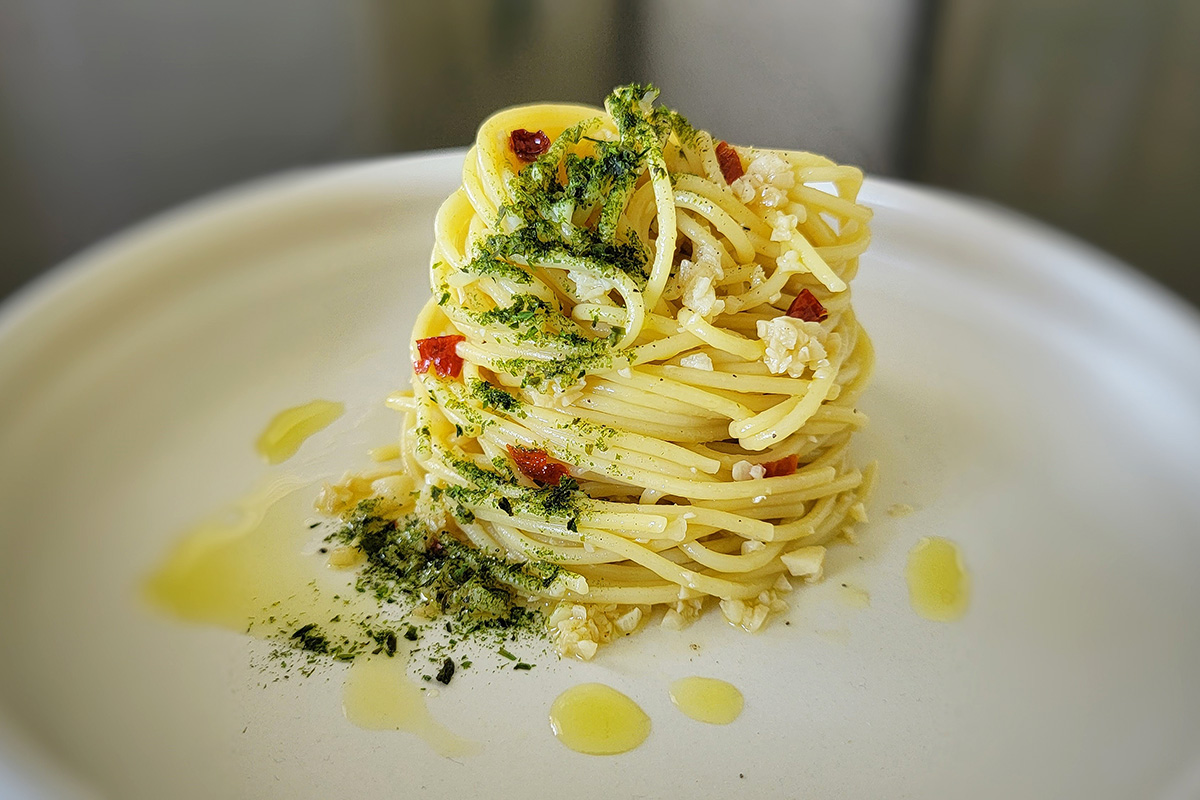
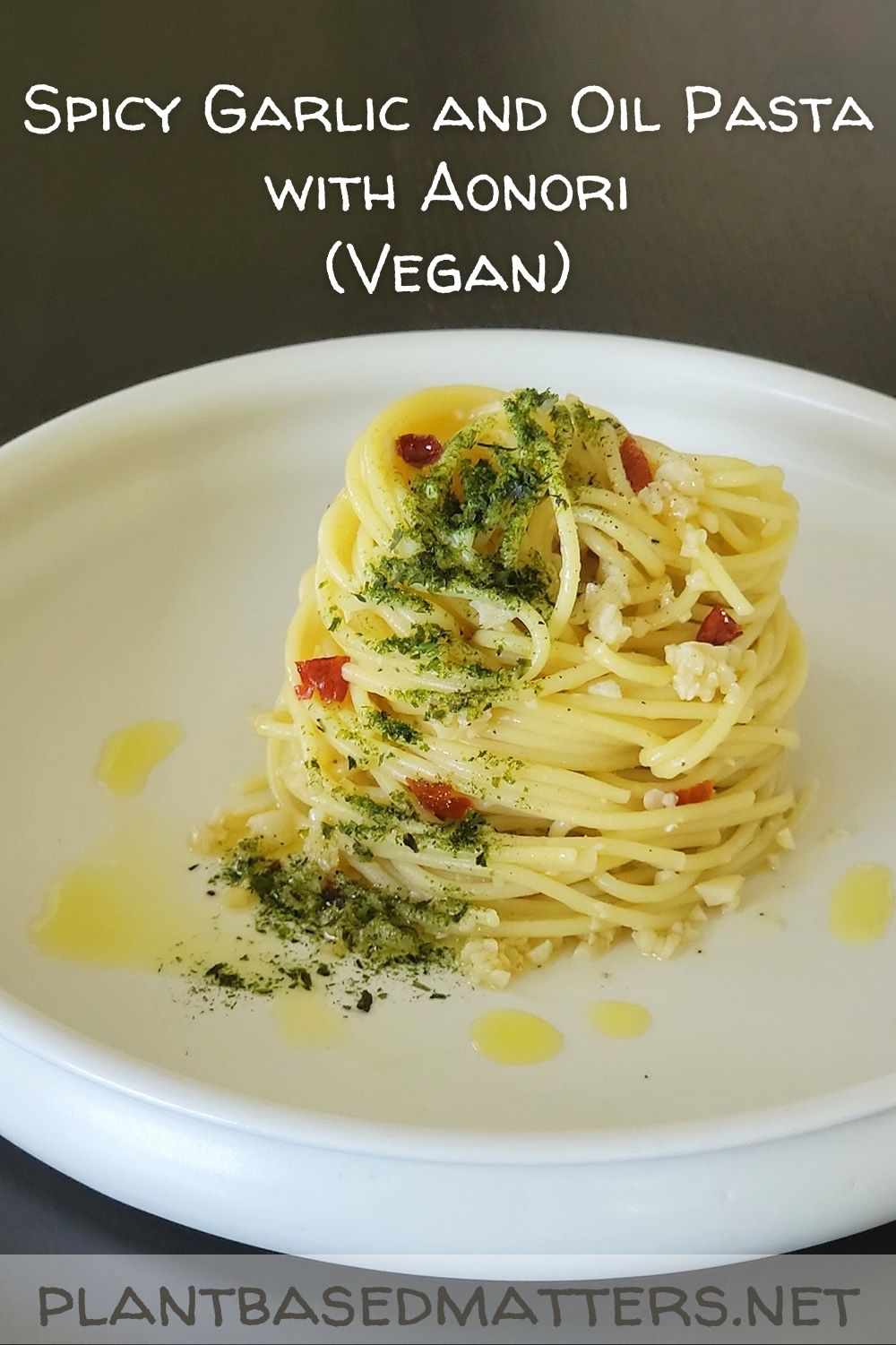
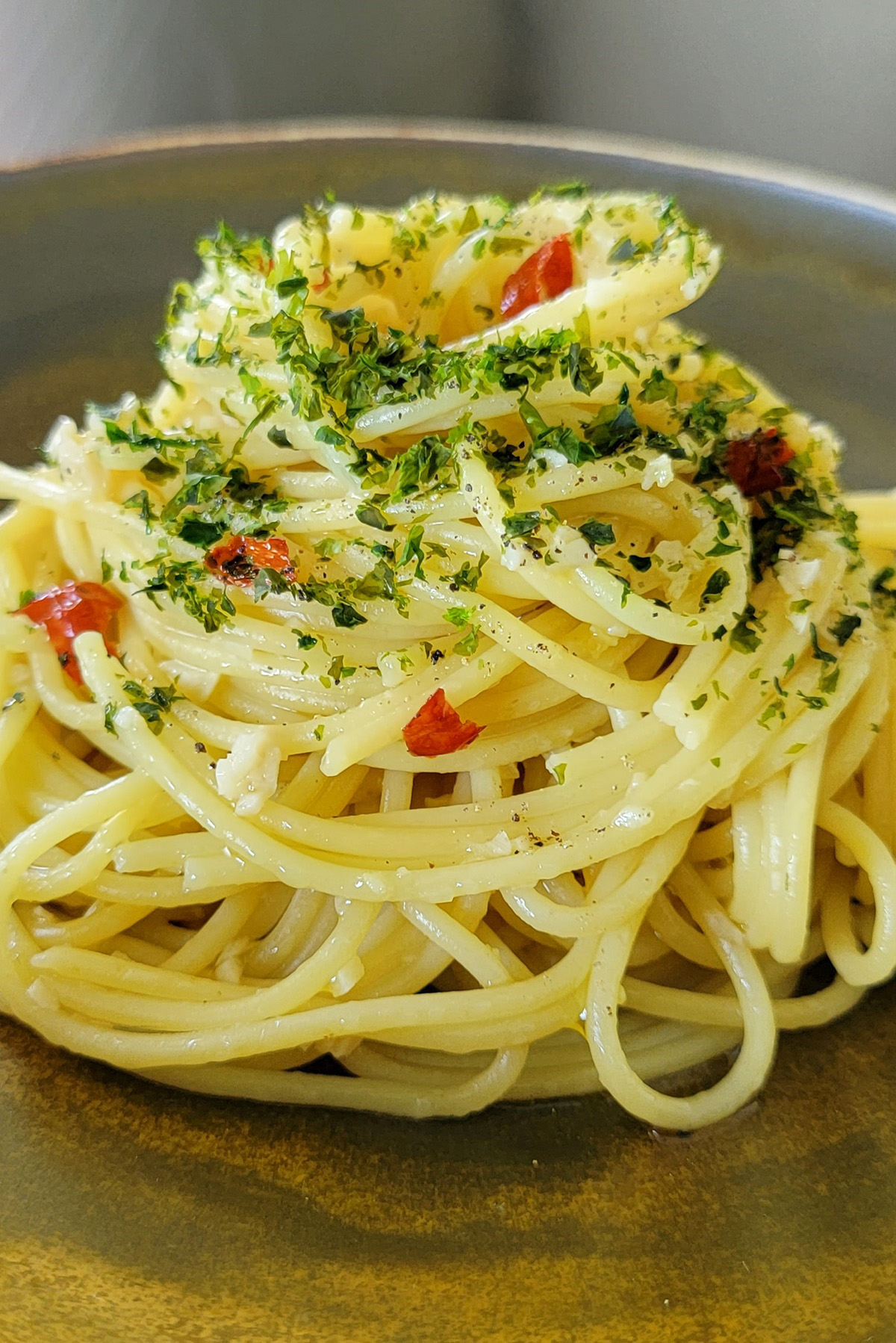
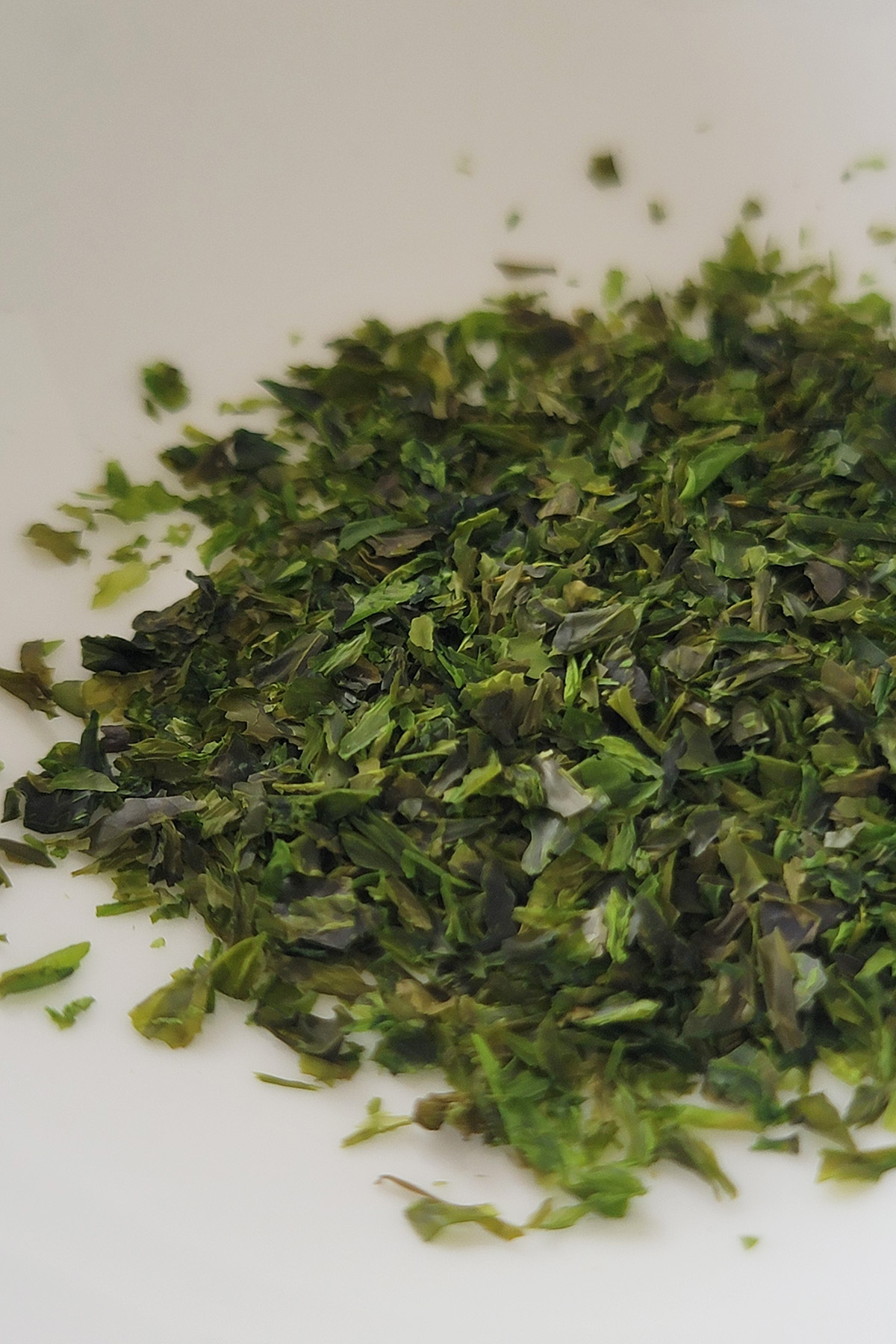
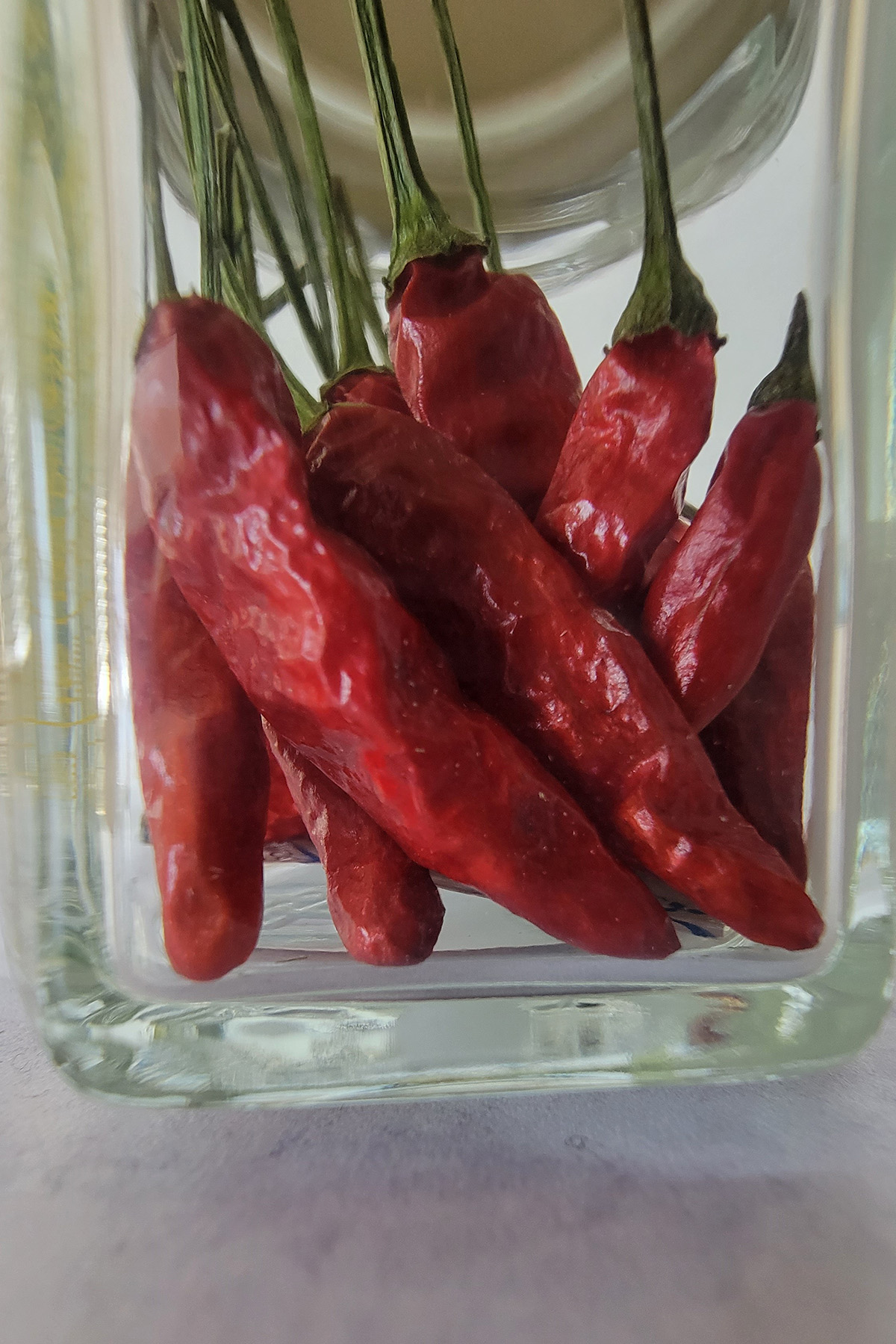
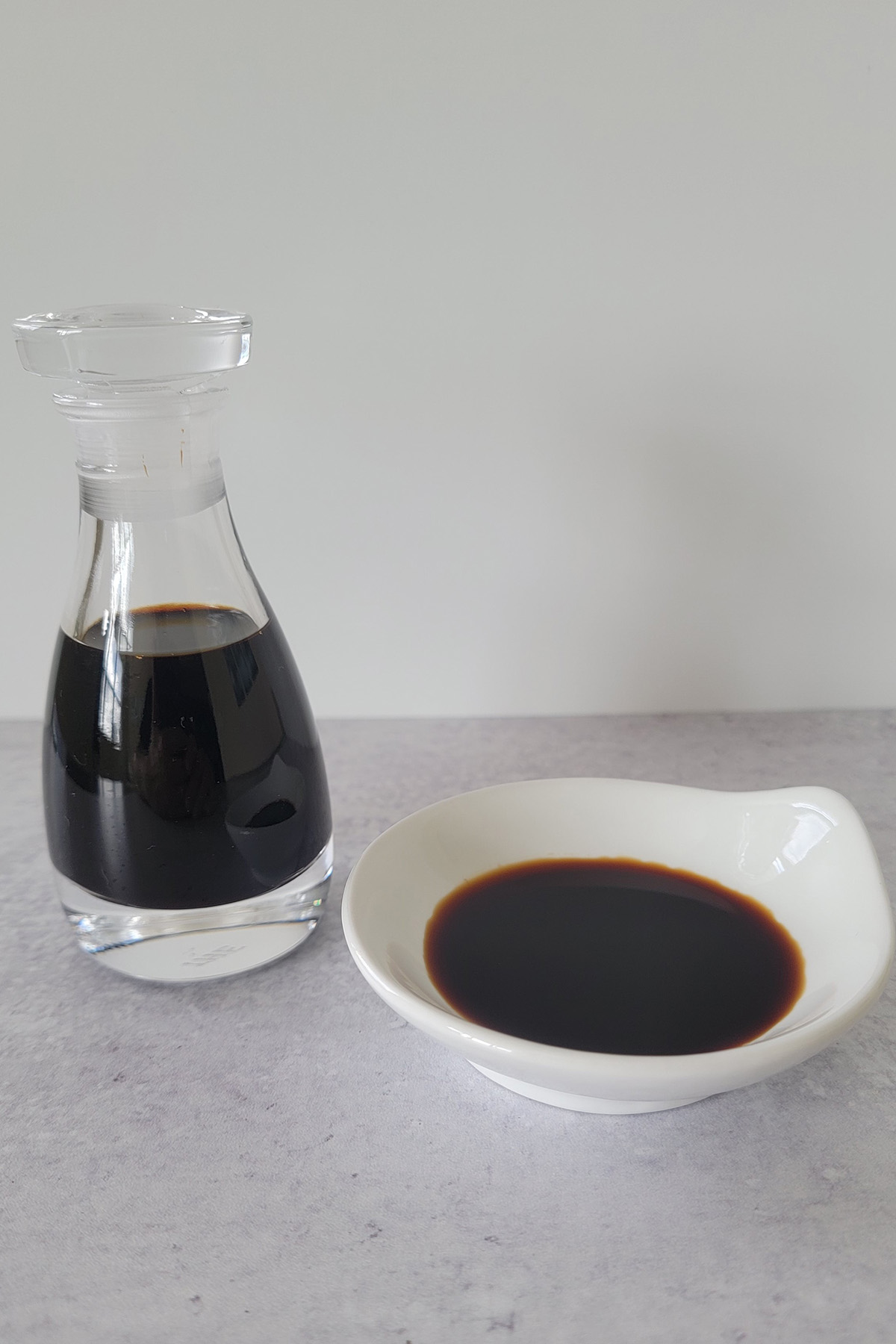
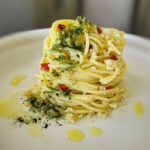
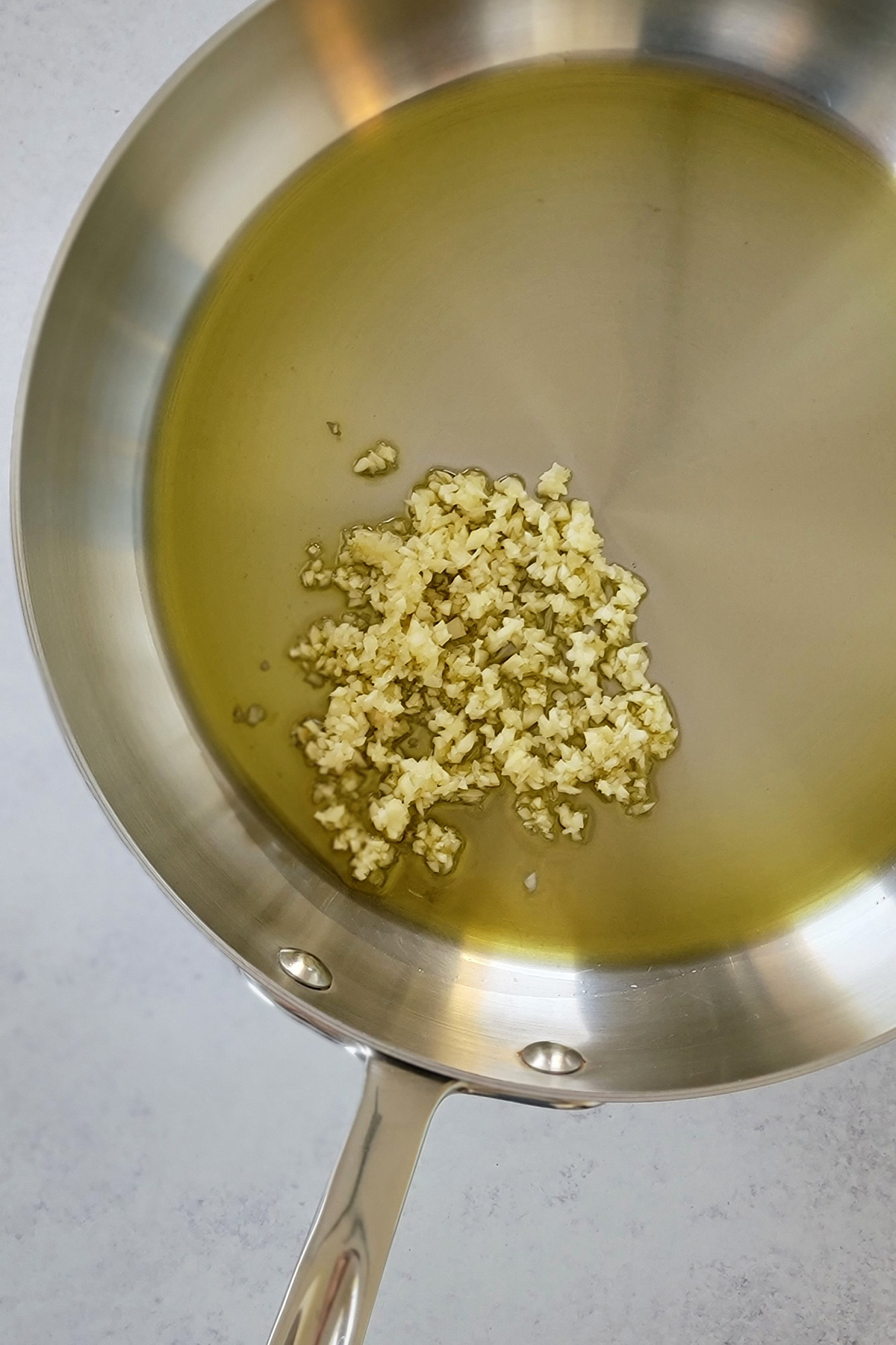
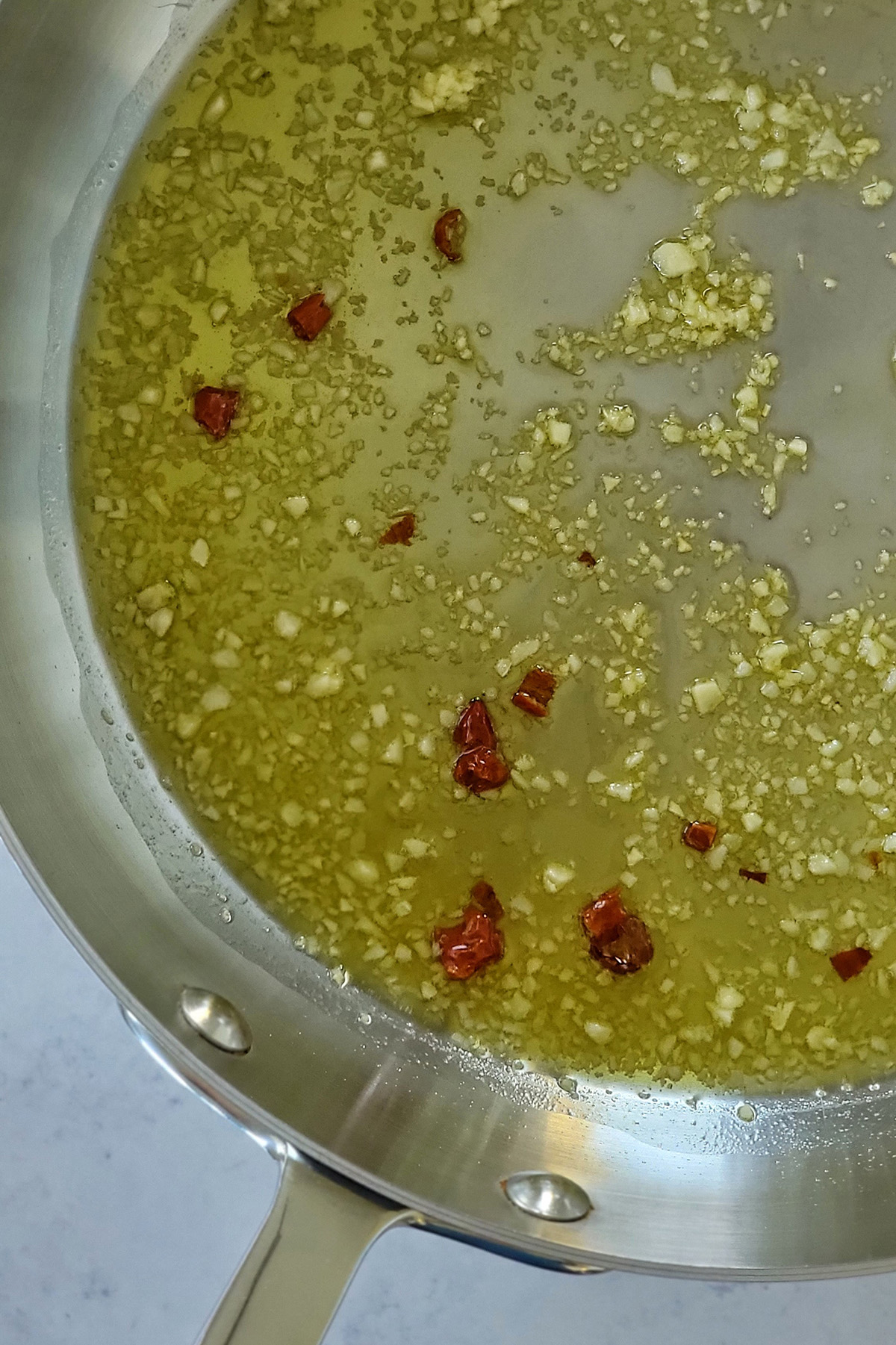
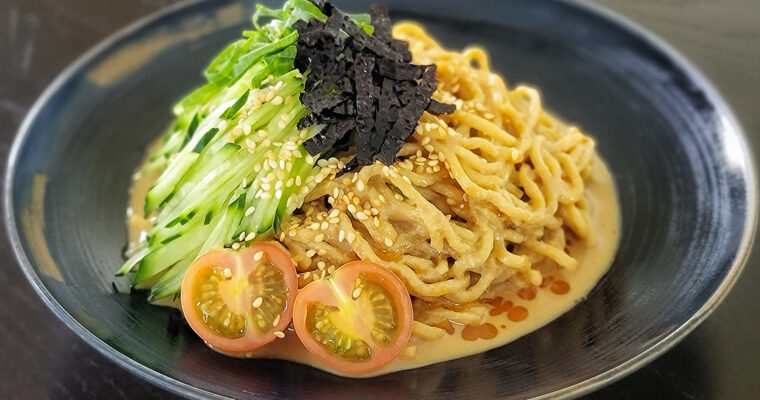
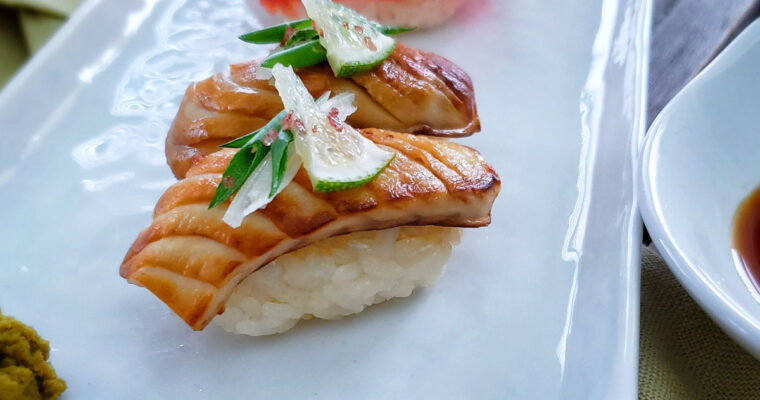


![CREAMY CHERRY TOMATO SAUCE PASTA (VEGAN)
[濃厚ミニトマトクリームソースパスタ(ヴィーガン)]
By @plantbased_matters
Recipe link in bio or at plantbasedmatters.net
Creamy Cherry Tomato Sauce Pasta (vegan) would be a perfect comfort food to make when sweet and juicy cherry tomatoes are in season. Cherry Tomato season is right around the corner, so definitely save this recipe and enjoy this satisfying dish!
This vegan creamy tomato sauce has no dairy or cream at all (not even plant-based milk or nut milk), but it's very rich and creamy and insanely tastey!
#pasta #pastapasta #veganpasta #tomatosauce #cheese ##vegancheese #pastalovers #parmigiana #parmesan #healthiswealth](https://plantbasedmatters.net/wp-content/plugins/instagram-feed/img/placeholder.png)